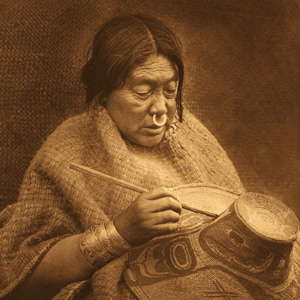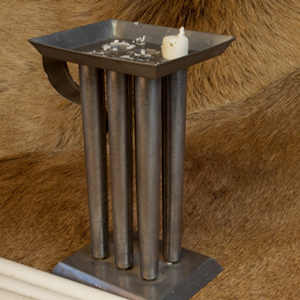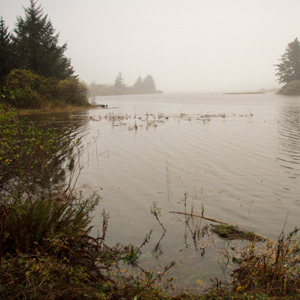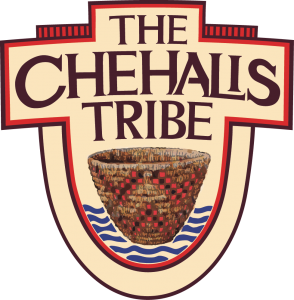Villages formed the main social groupings and political units of these Salishan-speaking peoples. Many of the rivers inhabited by the Lower Chehalis still retain the name of those villages: Humptulips, Hoquiam, Wishkah, Wynoochee, Newaukum, and the namesake Chehalis River. Many resided on present-day Grays Bay, and in 1792, the the people were among the first to trade there with American Captain Robert Gray. The people maintained close relationships with The Chinooks, Quinaults, and Upper Chehalis (the Kwaiailks).[1]Yvonne Hadja, Handbook of North American Indians: Northwest Coast Vol. 7, ed. Wayne Suttles (Washington, D.C.: Smithsonian Institution, 1990), 503,516; Robert H. Ruby, John A. Brown, and Cary C. … Continue reading
The Lewis and Clark Expedition encountered the Lower Chehalis mainly during their stay at Station Camp on Baker Bay. In the journals, the people’s name is spelled Chieltz and Chiltch. Today, the People are enrolled in the Confederated Tribes of the Chehalis Reservation, the Quinault Tribe of the Quinault Reservation, and the Shoalwater Bay Tribe.
Selected Encounters
November 6, 1805
Among the Cowlitz

The men paddle down the Columbia in the rain interacting with several villages near the mouth of the Cowlitz. In the evening, they build large fires to dry out and kill the fleas infesting their blankets.
November 15, 1805
Moving to Station Camp

They leave their “dismal nitich” and paddle to Baker Bay where Station Camp is established near the Chinook Middle Village. Clark learns of stolen rifles, and Lewis is at or near Cape Disappointment.
November 21, 1805
Clatsop and Chehalis visitors

At Station Camp near the mouth of the Columbia, some Clatsops and Lower Chehalis visit, and the wife of Chinook chief Delashelwilt brings six young females to camp. Clark describes Chinookan woven hats.
January 13, 1806
Out of candles

At Fort Clatsop near present Astoria, Oregon, elk tallow is rendered to make new candles, and Lewis finds that elk do not have enough fat. He also describes the ship trade among the area’s Nations.
March 21, 1806
Weather delay

At Fort Clatsop near the Pacific Ocean, bad weather prevents the expedition from leaving for home. Provisions are low, so hunters are dispatched and eulachon purchased from some visiting Clatsops.
Notes
| ↑1 | Yvonne Hadja, Handbook of North American Indians: Northwest Coast Vol. 7, ed. Wayne Suttles (Washington, D.C.: Smithsonian Institution, 1990), 503,516; Robert H. Ruby, John A. Brown, and Cary C. Collins, A Guide to the Indian Tribes of the Pacific Northwest (Norman: University of Oklahoma Press, 2010), 162. |
|---|
Experience the Lewis and Clark Trail
The Lewis and Clark Trail Experience—our sister site at lewisandclark.travel—connects the world to people and places on the Lewis and Clark Trail.
Discover More
- The Lewis and Clark Expedition: Day by Day by Gary E. Moulton (University of Nebraska Press, 2018). The story in prose, 14 May 1804–23 September 1806.
- The Lewis and Clark Journals: An American Epic of Discovery (abridged) by Gary E. Moulton (University of Nebraska Press, 2003). Selected journal excerpts, 14 May 1804–23 September 1806.
- The Lewis and Clark Journals. by Gary E. Moulton (University of Nebraska Press, 1983–2001). The complete story in 13 volumes.


